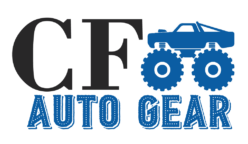CV joints transfer power from the transmission to wheels. Splines secure the joint to the shaft for smooth torque transfer. Wear in the splines introduces play reducing joint efficiency over time. Healthy splines maintain alignment and consistent rotation under all driving conditions. Understanding spline wear improves maintenance and prolongs CV joint lifespan effectively. Proper care prevents unexpected driveline failures and preserves driveline integrity consistently. Acting promptly ensures predictable torque delivery and safe vehicle handling reliably. Spline condition is critical for consistent driveline performance and joint durability. Drivers can rely on Auto Repair in Manchester, IA for expert inspection and repair of worn splines. Ignoring wear accelerates vibration noise and may cause sudden disconnection or failure.
Causes of Spline Wear
Wear occurs from repeated stress friction and rotational load constantly. Misalignment or improper installation accelerates degradation of spline teeth quickly. Contaminants like dirt and debris increase abrasion reducing smooth torque transfer. Mechanics inspect splines during service for unusual play or damage carefully. Replacing worn components restores proper engagement and reliable torque delivery. Healthy splines maintain rotational alignment and reduce internal stress consistently. Ignoring wear allows micro-damage to escalate into major driveline problems. Proper lubrication reduces friction and prevents early deformation of splines effectively. Spline wear is a silent precursor to larger CV joint failures.
Impact on Joint Play
Worn splines allow movement between the CV joint and shaft. Excessive play produces clunking vibration and inconsistent torque transfer immediately. Misalignment may cause accelerated wear on bearings cages and internal surfaces. Mechanics test spline engagement and check for looseness during inspection carefully. Replacing damaged splines restores correct alignment and smooth rotation reliably. Healthy splines maintain joint geometry reducing internal friction and stress. Ignoring play allows internal damage and potential driveline failure quickly. Proper spline maintenance ensures quiet operation and smooth driveline performance consistently. Play in splines produces progressive problems if left unaddressed repeatedly.
Noise and Vibration
Worn splines create clicking clunking or rattling during vehicle operation. Irregular joint movement transmits vibration through the driveline and steering consistently. Noise increases under acceleration, deceleration, or load gradually over time. Mechanics detect spline wear by observing unusual sounds and vibrations carefully. Replacing worn splines restores smooth rotation and reduces internal play effectively. Healthy splines operate quietly maintaining driveline stability and predictable torque delivery. Ignoring noise allows further damage to bearings cages and races. Proper diagnosis and repair prevent progressive vibration and driveline instability reliably. Spline damage manifests audibly before complete joint failure occurs predictably.
Conclusion
Spline wear reduces CV joint performance gradually over time repeatedly. Play between the joint and shaft produces vibration and clunking noise. Damaged splines increase internal stress and risk sudden driveline failure. Early inspection prevents secondary damage and restores smooth torque delivery. Replacing worn splines ensures consistent engagement and reliable vehicle control. Healthy CV joints maintain handling stability and driveline performance efficiently.

